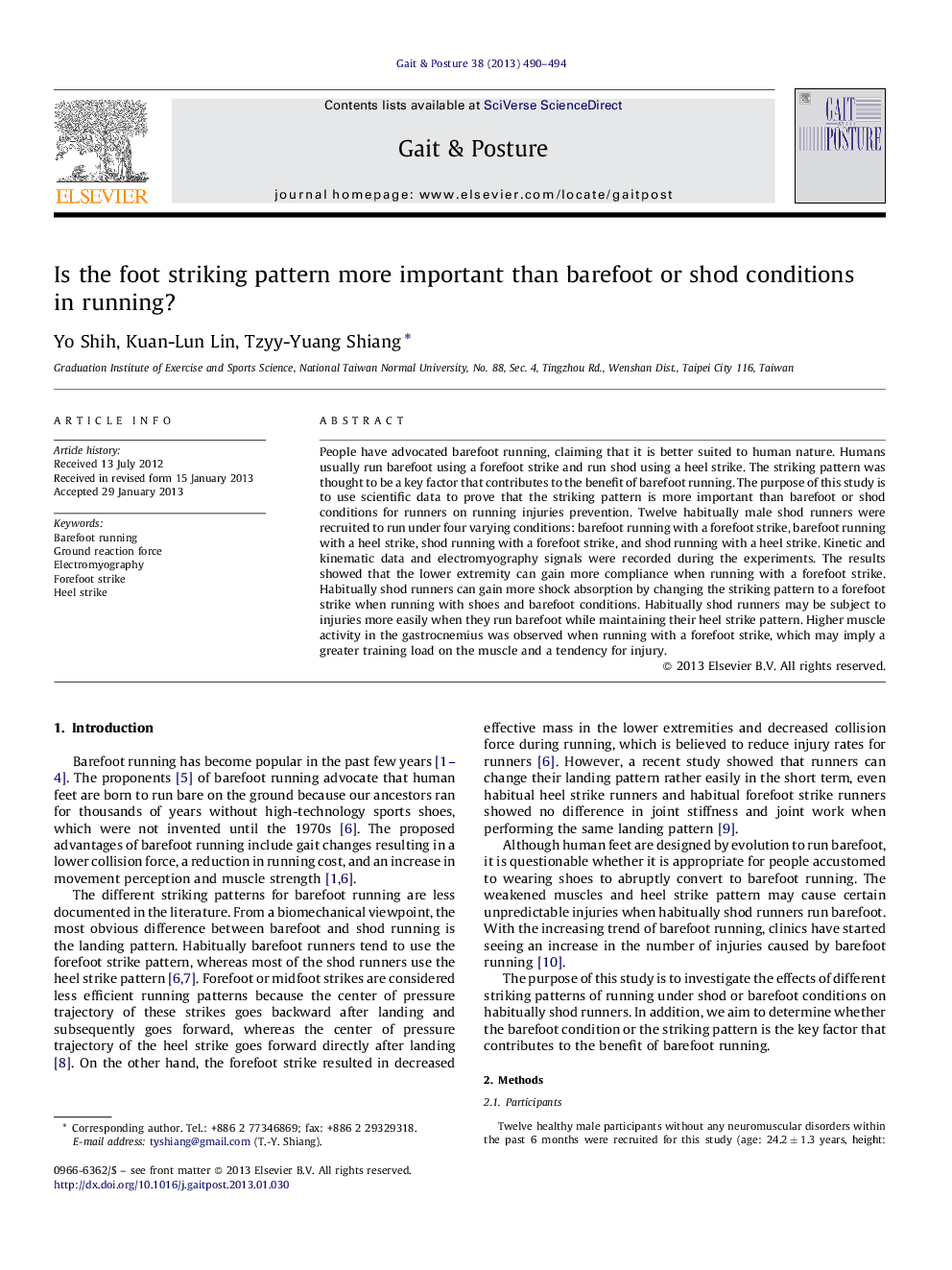| کد مقاله | کد نشریه | سال انتشار | مقاله انگلیسی | نسخه تمام متن |
|---|---|---|---|---|
| 6206639 | 1265650 | 2013 | 5 صفحه PDF | دانلود رایگان |
People have advocated barefoot running, claiming that it is better suited to human nature. Humans usually run barefoot using a forefoot strike and run shod using a heel strike. The striking pattern was thought to be a key factor that contributes to the benefit of barefoot running. The purpose of this study is to use scientific data to prove that the striking pattern is more important than barefoot or shod conditions for runners on running injuries prevention. Twelve habitually male shod runners were recruited to run under four varying conditions: barefoot running with a forefoot strike, barefoot running with a heel strike, shod running with a forefoot strike, and shod running with a heel strike. Kinetic and kinematic data and electromyography signals were recorded during the experiments. The results showed that the lower extremity can gain more compliance when running with a forefoot strike. Habitually shod runners can gain more shock absorption by changing the striking pattern to a forefoot strike when running with shoes and barefoot conditions. Habitually shod runners may be subject to injuries more easily when they run barefoot while maintaining their heel strike pattern. Higher muscle activity in the gastrocnemius was observed when running with a forefoot strike, which may imply a greater training load on the muscle and a tendency for injury.
⺠Runners can gain more compliance in the lower extremity with a forefoot strike. ⺠Run barefoot with heel strike pattern may subject to injuries more easily than shod. ⺠Higher activity in the gastrocnemius was observed when running with a forefoot strike.
Journal: Gait & Posture - Volume 38, Issue 3, July 2013, Pages 490-494
